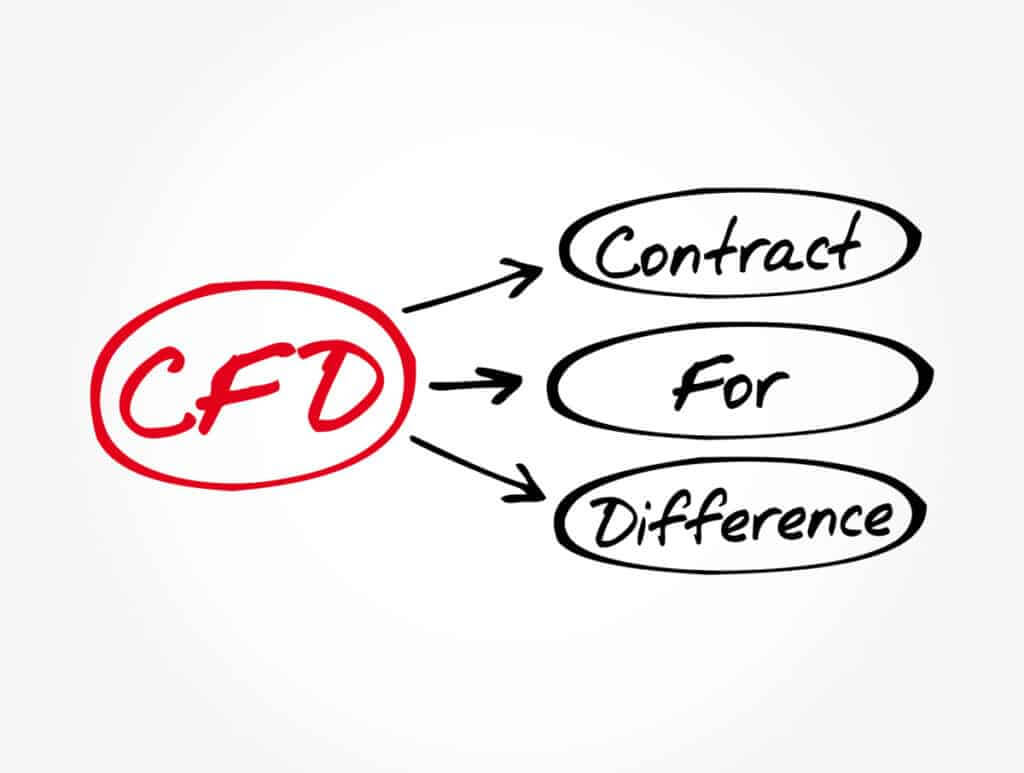
CFD trading strategies – A brief yet informative guide
Key Takeaways:
- CFDs offer profit opportunities without owning assets, but they come with risks.
- Minimal costs and accessibility make CFDs appealing.
- Leverage amplifies gains and losses, so use it wisely.
- Patience can be rewarding in Contract for Differences trading.
- CFD trading suits various goals, but learning is key.
- Start cautiously, build skills, and then explore CFD strategies.
Have you ever wondered what CFD trading strategies are? Why is it so essential to learn what they are and how to utilize them perfectly in trading platforms nowadays?
If you are into trading CFDs, it’s not surprising how CFD trading works exactly, whether to go long or short, what open positions and leveraged products are, and much more!
As a newcomer to CFD trading, you may feel intimidated by the concept. CFD stands for “contracts for difference.” You can make money while trading using CFD trading strategies. We compiled a brief guide of Contract For Differences trading tips and techniques that you could find useful as you progress as a trader.
In short, the CFD trading method is unique because you can make a profit depending on price movement without owning an asset. So, before we proceed to CFD trading strategies, let’s get to know its definition, shall we?
A Definition of CFD and its trading strategies
Two sides must be included in a CFD contract, where they agree to pay the price difference between the opening and closing price of a chosen asset on the market. It’s a way of speculation, and profit or loss is made when the underlying asset changes its position of the opening price.
Even if you are trading with a broker and you chose a CFD strategy, you are speculating whether the price will go up or down. Thus, you do not have to own the asset that is trading. Popular options that include CFD trading strategies include trading with Bitcoin, oil, and Forex.
A contract for differences is an agreement between an investor and a CFD broker to exchange the difference in the value of a financial product between the time the contract opens and closes.

CFDs and their Benefits
We mentioned the most popular CFD trading options. Still, the beauty of it is that whatever you find interesting, you can probably use a Contract for Differences way of trading, whether it’s crypto or a commodity.
Cost, of course, is the most attractive thing since not owning an asset means minimal costs. Fees are also really low because brokers mostly profit from CFD contracts when you pay the spread.
Not owning an asset means you don’t have to borrow anything or shorten costs, so there are fewer rules, and accessibility is high.
As Forex, Contract for Differences trading now operates 24 hours a day, Forex, it also operates 24 hours a day. CFD day trading requirements are minimal, while the leverage is much higher than if you were trading the traditional way.
Keep in mind that poor margin rates can propel you to high positions. However, you’ll lose a lot if you lose, so do adequate research before diving into it.
Many people miss mentioning that CFDs can last virtually forever, meaning you can wait for a long time until you take a position. This is ideal for CFD traders who like to trade patiently and observe the right circumstances on the market.
CFDs Disadvantages
There aren’t many CFD trading strategies disadvantages, but it’s good to mention them. When considering CFD trading, you should pay attention when you are selecting a broker. It is important to ensure they are under regulation since the CFD industry itself isn’t entirely.
Also, leverage can be a disadvantage, no matter how advantageous it can be. We mentioned above that the margin could double your wins but double your losses as well. The decision is up to you if you are ready for this type of risk.
Be aware of what you are getting yourself into and if you are willing to abide by the Contract for Differences trading strategies rules.
Another disadvantage is that the trader needs enough money to support the trade. CFD trading does not require a lot of money, which is one of its main attractions. However, this does not mean that you should invest in it.
But if the position moves against you, you will have to be ready to stay in and gain more money or get out.
CFD trading strategies
There are two popular CFD trading strategies, the first one being:
Breakout Strategy: Where you need to identify a key price level for security that is given. This means that once the price hits your key, you need to buy or sell, depending on the current trend. If you aren’t sure what to do right away, you don’t have to do it right away.
As we said, you can wait until the time is right/when you are sure about your CFD trading strategy and its success percentage.
Without any clear signals, it would be best to avoid trades. Until then, learn and observe different charts and patterns. This way, you can identify something better that you may have missed.
Contrarian Trading Strategy
Contrarian CFD Trading Strategy: Relies heavily on timing. You know that trends don’t last long, so you need to identify or rather speculate where you believe the point is near the end of the trend.
The next step in this type of Contract For Differences trading is entering a buy position, and you hope and speculate that the trend will take another direction.
Other strategies do exist, but these two have been proven to be the most successful regarding CFD trading.What are Top Cfd Trading Strategies to note?
If you were wondering what are the top Contract For Differences strategies, especially for beginners, we’d like to point out the following ones:
Trend Following CFD Strategies
One of the most effective CFD trading methods is trend following, which involves analyzing share price trends and capitalizing on momentum.
To employ these strategies and seize day trading opportunities, you need technical tools like moving averages and trendlines to identify support and resistance levels.
While trend following can be profitable, it requires patience and discipline. It’s vital to wait for clear signals and avoid emotional day trading.
Range Trading CFD Approach
Experienced traders often favor range trading. This strategy centers on identifying support and resistance levels where share prices tend to fluctuate.
You can open long positions at support and short positions at resistance, making it suitable for risk-conscious day traders.
Using indicators like Bollinger Bands or RSI helps spot overbought or oversold conditions within a range. However, keep an eye on external factors that may disrupt the established range.
News Trading CFD Strategy
News trading is suitable for both beginners and experienced traders. It involves monitoring economic news releases to capitalize on market reactions. Events like interest rate decisions can significantly impact share prices, providing day trading opportunities.
Before implementing these CFD strategies, open an account, a crucial first step. Remember, all trading involves inherent risks, and risk management is essential, even in day trading.

What should you remember about CFD strategies?
When diving into the realm of CFD strategies, it’s crucial to bear in mind a few critical aspects. Contract for Difference (CFD), often perceived as a high-risk financial instrument, enables traders to partake in speculative activities across global markets, all without the need to own the underlying asset.
One of its distinctive features is the application of leverage, which can be akin to a double-edged sword, as it has the potential to amplify both potential profits and losses significantly.
Before embarking on a Contract For Differences trading journey, traders must ensure they have a solid foundation in its basics, understanding that while it offers the potential for substantial gains, it’s far from risk-free.
Additionally, they should be mindful of the margin required, as it plays a pivotal role in managing the inherent risks associated with CFD trading.
Exploring Contract for Difference (CFD) Strategies
When delving into the world of CFD strategies, it’s essential to keep in mind a few critical aspects. Contract for Difference (CFD), regarded as a high-risk financial instrument, allows traders to engage in speculative activities across global markets without needing to own the underlying asset.
One of its distinctive features is the application of leverage, a double-edged sword that amplifies both potential profits and losses.
Preparing and Planning for CFD Trading
Before embarking on a CFD trading journey, traders must equip themselves with a solid foundation in its basics. This includes understanding the mechanics of CFD accounts, their associated margin calls, and the potential for substantial profits.
A crucial initial step is the development of a comprehensive trading plan. This plan should encompass various facets, such as trading motivation, time commitment, specific goals, risk tolerance, and meticulous record-keeping practices.
Once the trading strategy is in place, strict adherence to it is vital, coupled with continuous monitoring of positions.
Analyzing Markets and Managing Risks in CFD Trading
Analyzing markets and managing risks represent the cornerstone of successful CFD trading. Traders need to employ various analytical techniques, combining technical and fundamental analyses, to determine optimal entry and exit points for their trades.
Also, they must calculate their position size carefully, reflecting the total market exposure of each trade. The prudent use of stops and limits is indispensable in managing the inherent high risk of CFD trading.
A stop-loss order safeguards against excessive losses by closing a position at a less favorable price, while a limit-close order secures profits by closing a position at a more advantageous price.
Starting Cautiously and Monitoring Positions
Starting cautiously is a prudent approach in the realm of CFD trading. New traders are advised to commence with small positions, preferably in markets they are familiar with or genuinely interested in.
As confidence in their strategy grows, diversifying exposure across different asset classes becomes a viable option. Concurrently, vigilant monitoring of open positions is a must, as this helps traders identify potential issues or seize opportunities as they arise.
It’s also crucial to ensure that sufficient capital is available in the trading account to cover the total maintenance margin, as neglecting this requirement could result in automatic position closure.
Utilizing a Trading Journal for Improved CFD Trading
To bolster the management of open positions and trading performance, utilizing a trading journal or log is highly recommended. This can take the form of a simple spreadsheet or more advanced software designed for tracking trades and analyzing performance metrics.
By meticulously recording trade details, such as entry and exit points, position size, and profits or losses, traders can identify patterns and learn from past mistakes.
Beyond that, a trading journal fosters accountability and discipline by providing a transparent record of trading decisions and their corresponding outcomes.
Regularly reviewing this journal yields invaluable insights, enabling the refinement and optimization of one’s Contract For Differences trading strategy over time.
In Conclusion
CFD trading can be a very profitable way of earning profit. It ultimately depends on your trader personality type and how much of a good observer you are. If you are completely new to the market, we advise you to talk to your broker about your trading goals, whether you want a short-term profit or a long-term.
If you are eager to try it out but don’t have enough experience, it’s better to wait it out a bit and learn more about financial markets, market sentiments, resistance levels, price breaks, and how prices move.
First, get used to the technical analysis and market, and ensure you’re easily reading charts and analysis. After that, you can explore the CFD trading strategy and see its benefits. Good luck!
- Test your knowledge of CFD’s trading and terms. Take the quiz!
-
Support
-
Platform
-
Spread
-
Trading Instrument




